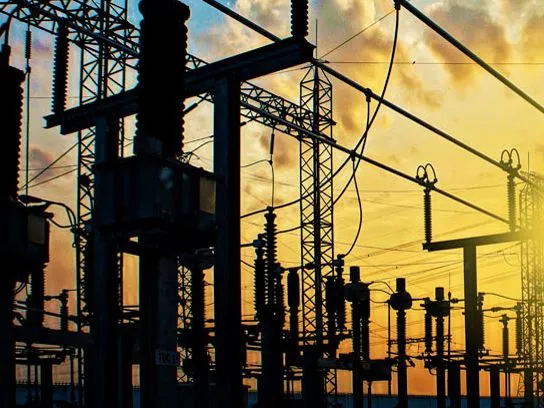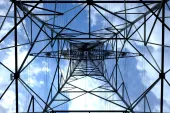
Why India's 2022 renewables targets face a foggy horizon
The culprit? Recent auction cancellations and higher solar prices.
With a little more than just three years down the line, India’s 175GW wind-solar targets are in jeopardy as investor confidence plummets and equipment duties increase. Analysts point to the recent scrapping of solar auctions around tariff concerns as the major reason behind the loss of investor confidence. In addition, the country’s solar auction target for 2019 will likely be missed amidst bottlenecks in land acquisition, doubts around grid connectivity, and changing implementation strategies of safeguard duties.
India has set the targets at 100GW for solar and 75GW for 2022, already an ambitious endeavour from the point of view of analysts and stakeholders. Rishab Shrestha, solar analyst, Wood Mackenzie, said that despite significant cost declines, India will meet only 76% of the total target, which could be considered an achievement given the circumstances and in view of increasing electricity demand.
"India faces a myriad of challenges in the renewables industry. The recent cancellation of auctions risks jeopardising investor confidence. Various duties on equipment and the associated uncertainty has led to a short-term uptick in solar prices. This leads to a knock-on effect on already cash-strapped state distribution companies who are showing an unwillingness to greenlight high priced solar projects,” Shrestha said.
Investors may have lost their excitement around the targets, but the Indian government’s commitment and support appear to be strong as they respond to various industry hurdles. According to Shrestha, the government has been helping to reduce project risks and as a result, has been able to keep renewable prices at a competitive rate.
Over the last four years, India has already achieved a lot in terms of increasing its wind and solar capacity. The numbers have almost doubled from 2014 levels to 61 GW in 2018, driven by the significant cost decline from auctions. Shrestha added that capital costs are expected to decline by 23% for wind and 31% for solar in the next five years as new generation technologies push out old ones. By 2023, non-hydro renewables are expected to make up 13% of the generation mix.
"Initial policy discussions on 2030 renewables target already shed a positive light on renewables. Improving grid flexibility through storage and flexible power generation will be extremely crucial in achieving high levels of renewable penetration. Economic competitiveness, technological maturity, and financially healthy off-takers will provide a solid base for renewable capacity growth to cater to electricity demand growth,” Shrestha said.
Furthermore, it must also be noted that India had already installed 25GW of solar power by September 2018, a quadruple increase over less than three years. By the same month, total renewable energy installations across India had reached 75GW, which is 21% of total installed capacity and a record high of 11.9% of the entire power generation mix.
Tim Buckley, director, Energy Finance Studies, Australasia, Institute for Energy Economics and Financial Analysis (IEEFA) also said that the momentum is still very positive, with 26GW of new solar tenders in train and Prime Minister Narendra Modi’s $70-80b of renewable energy investment in the next four years. Buckley notes that the country’s ambitious targets are not without rationales, as community concerns rise over excessive air pollution and associated health costs, especially in New Delhi.
“Further, the devaluation of the rupee coupled with volatility in oil prices during 2018 has increased the country’s energy security concerns, drawing attention to India’s excessive reliance on increasingly expensive imported fossil fuels. In addition, $10b worth of financial distress being experienced by import coal-fired power plants at Mundra in Gujarat is further adding to the country’s significant financial and political angst of late,” Buckley said.
On top of renewables targets, India is on track to meet most of its Paris agreement goals. In fact, analysts estimate that 40% of the country’s non-fossil fuel capacity target will be met a decade early. Buckley said that India’s achievement comes from Prime Minister Narendra Modi’s 2015 announcement of ambitious policy commitments to meet the global Paris agreement, focused on sustainable development and climate justice.
However, headwinds have also begun hampering the path to the Paris agreement targets, with the country’s NEP 2018 target of reducing fossil fuel capacity to just 43% of total installed capacity by 2027 facing challenges with the electric grid’s capacity to quickly incorporate high variable energy penetration.
India’s nationally determined contributions post-2020 include achieving 40% of electric power installed capacity from non-fossil fuel by 2030, representing a jump of 33% over non-fossil fuel capacity of 2015; reduction of emissions intensity of the country’s gross domestic product (GDP) by 33-35% from the 2005 level to 2030; and the creation of an additional 2.5-3.0 billion tonnes of carbon sinks through additional tree and forest cover. On the last one, analysts observe that India is behind schedule.
“The deflationary momentum in the solar and wind generation sectors has enabled India’s electricity sector to turn to deflationary, emissions-free, domestic alternatives in the past several
years, particularly as renewable energy tariffs have fallen below Rs3.00/kWh with zero indexation for 25 years. In contrast, the Central Electricity Authority of India estimates the levelised tariff for an outdated-technology, super-critical mine-mouth coal-fired power plant operating at a realistic capacity factor of 60% would be Rs4.39/kWh,” Buckley said.
On the other hand, coal remains to be a key feature of India’s generation mix, especially in the short-term. Pralabh Bhargava, coal principal analyst, Wood Mackenzie, said that they have increased India’s imports for thermal coal from 158 Mt to 164 Mt in 2018, with a further upside risk of 3-4 Mt as coal stocks are at historically low levels. According to him, India’s spot market prices for both coal and power are expected to remain strong in the coming months. He said that continuous industrial production growth has been pushing demand amidst tight supply.
Whilst the New Policies Scenario from the International Energy Agency (IEA) shows coal consumption declines in China, Europe, and North America, these are offset by rises in India and Southeast Asia. Thus, industrial coal use shows a slight increase to 2040.
"Growth in domestic coal production and dispatches can only partially meet the growing demand for coal, which is resulting in increased reliance on imports. With a decade-low stockpile at Coal India's mines and more than half of the plants with a supercritical level of less than seven days’ stock, the reliance on imported coal for several power plants will increase the flow of imports into India,” Bhargava added.
For the longest time, India’s demand for imported thermal coal was a result of the lack of domestic supply and the need for high-energy coal by non-utilities. Wood Mackenzie forecasts the rally in Indian imports to spillover into early next year, as industrial production in India remains on an upward trend, growing at an average of more than 7% this year.
“This has led to an increase in power generation by 6% over January to August 2018, with August achieving a record high of 122 TWh of power generation. Cement production was up 16% and steel production 4% for the same period. Policies to improve the power sector have started to have an impact,” he added.
Furthermore, the Indian government also aims to destress some of its power generating units, an action that may result in improvements in load factors at several plants in the short-to-medium term. In the steel sector, Bhargava noted that India’s hot metal production was up 10% YoY from January to August.
“With limited domestic upside in metallurgical coal production, steelmakers relied more on imported coking coal. However, with increased utilisation of plants and higher metallurgical coal prices, most of the steel producers increased PCI rates at blast furnaces, which led to PCI imports increasing by more than 70% for January to August. We expect the overall growth trend in metallurgical coal imports to persist, as industrial production continues to grow and India looks to maintain tariffs on certain imported steel products,” he added.
The country’s fast growing electricity needs have been the subject of various proposals, one of which is THDC India Limited’s proposed 1,320 MW Khurja Supercritical Thermal Power Plant located in the Bulandshahr district of Uttar Pradesh. Buckley said that the power plant is a long delayed, outdated business proposal that can no longer satisfy the country’s energy hunger.
“Today, the project remains mired in litigation with no indication of when construction might begin. Further, the rapid changes across the Indian electricity market in the past seven-plus years raises serious questions about the continuing need for the project’s capacity and its very tenuous financial viability,” said Buckley.
If India wants to meet its energy targets at all, it should not only look towards a distant future. A report by the International Energy Agency (IEA) notes that in highly regulated markets such as India, there is a risk that capacity runs ahead of demand. They estimate that today, there are 350GW of excess capacity in regions including India, China, Southeast Asia, and the Middle East. IEA said that this represents additional costs to the system which it cannot afford.
The Khurja plant is fast losing its viability amidst a market that aims to move to cheaper and cleaner options. The IEEFA reports that compared to sub-4 cents (Rs3) per kWh renewables with zero indexation, the Khurja project, at a realistic tariff of 8 cents (Rs5.67) per kWh, is effectively reliant on a tax-payer sponsored subsidy of $10b (Rs6,946 crore) over a period of 25 years.
“The cost at the Khurja plant will almost certainly be higher. For starters, the plant is not a mine-mouth facility and will have to transport its coal more than 900 kilometres, incurring significant freight charges. In addition, the plant’s initial cost estimates were prepared before the coal price increases of the past couple of years. Finally, the plant’s environmental impact assessment (EIA) from November 2016 assumed the facility would post a capacity factor of 90%; the country’s existing coal fleet has averaged below 60% for the past two years,” Buckley said.
Meanwhile, there has not been an acceleration of emission standards enforcement for existing thermal plants, especially for private and state plants. Analysts say that retrofits are expensive for plants left with substantial operational life. This, coupled with the existing financial burden in the thermal power sector, has left the government at a loss on how to resolve thermal power challenges. Hence, coal remains in the focus whilst renewable targets are being strived for.



















 Advertise
Advertise






